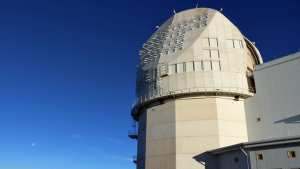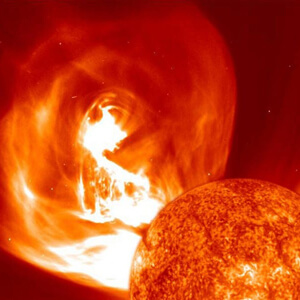Research by astronomers and computer scientists at the University of Hawaiʻi Institute for Astronomy (IfA) could revolutionize our understanding of the Sun.
The study, part of the "SPIn4D" project, combines cutting-edge solar astronomy with advanced computer science to analyze data from the world's largest ground-based solar telescope atop Haleakalā, Maui.
The team's research recently published in Astrophysical Journal focuses on their development of deep learning models that rapidly analyze vast amounts of data from the U.S. National Science Foundation (NSF) Daniel K. Inouye Solar Telescope . The goal is to unlock the full potential of the telescope's observations that could potentially lead to breakthroughs in speed, accuracy and scope of solar data analysis.
- Related UH News story: Never-before-seen images of Sun released from world's largest solar telescope

"Large solar storms are responsible for stunning auroras, but can also pose risks to satellites, radio communications and power grids. A better understanding of their birth place, the solar atmosphere, is extremely important," said Kai Yang, an IfA postdoctoral researcher who led the work. "We used state-of-the-art simulations to mimic what the Inouye will see. Combining these data with machine learning offers an invaluable opportunity to explore the three-dimensional solar atmosphere in near real-time."
The Inouye Solar Telescope, operated by the NSF National Solar Observatory (NSO), is by far the world's most powerful solar telescope, and stands on the 10,000-foot summit of Maui's Haleakalā, which translates to "the house of the Sun." The telescope's instruments are designed to measure the Sun's magnetic field using polarized light, and the SPIn4D project was designed specifically to use this data, which is only available from the solar telescope's instrumentation suite.
Innovative solar research

The team of scientists from NSO and High Altitude Observatory (HAO) utilize deep neural networks to estimate physical properties of the solar photosphere from the Inouye Solar Telescope's high-resolution observations. This method promises to significantly speed up the analysis of the massive data volumes produced by the solar telescope, which can reach tens of terabytes per day.
"Machine learning is very good at providing fast approximations to expensive computations. In this case, the model will enable astronomers to visualize the Sun's atmosphere in real time, rather than waiting hours to achieve the same accuracy," said co-author Peter Sadowski, an associate professor at the UH Mānoa information and computer sciences department .
Simulating the Sun
To train their AI models, the team has produced an extensive dataset of simulated solar observations. Using more than 10 million CPU hours on the NSF's Cheyenne supercomputer, they've created 120 terabytes of data mimicking Inouye Solar Telescope observations at extremely high resolution.
The team has already made a 13-terabyte subset of their data publicly available, along with a detailed tutorial. They plan to release their fully trained deep learning models as a community tool for analyzing Inouye Solar Telescope observations.
This research is supported by a $669,000 grant from NSF's Astronomy and Astrophysics Grants program. The team of scientists is composed of Yang, Xudong Sun, Ian Cunningham, Jiayi Liu, Curt Dodds (UH IfA), Sadowski, Yannik Glaser (UH Mānoa ICS), and Sarah Jaeggli, Tom Schad, Lucas Tarr (NSO) and Matthias Rempel (HAO).
The post AI and Astronomy: UH researchers to help decode Sun's secrets first appeared on University of Hawaiʻi System News .






